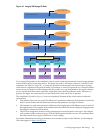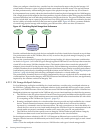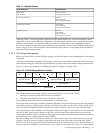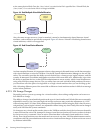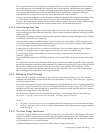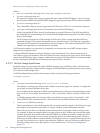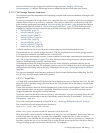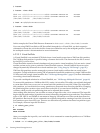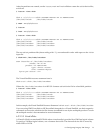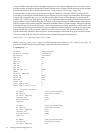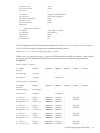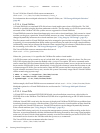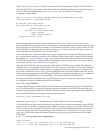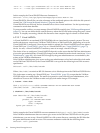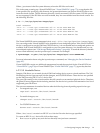# ioscan
# ioscan -funC disk
disk 110 0/5/1/0.11.16.0.0.0.2 sdisk CLAIMED DEVICE HP A6188A
disk 116 0/5/1/0.11.16.0.0.0.3 sdisk CLAIMED DEVICE HP A6188A
/dev/dsk/c19t0d3 /dev/rdsk/c19t0d3
# insf -H 0/5/1/0.11.16.0.0.0.2
# ioscan -funC disk
disk 110 0/5/1/0.11.16.0.0.0.2 sdisk CLAIMED DEVICE HP A6188A
/dev/dsk/c19t0d2 /dev/rdsk/c19t0d2
disk 116 0/5/1/0.11.16.0.0.0.3 sdisk CLAIMED DEVICE HP A6188A
/dev/dsk/c19t0d3 /dev/rdsk/c19t0d3
In this example, the Virtual Disk Resource Statement is disk:scsi::disk:/dev/rdsk/c19t0d2.
If you are using EMC PowerPath or HP SecurePath/Autopath for a Virtual Disk, use their respective
commands to ensure the sdisk device files chosen are enabled for use by the multipath product. Consult
the multipath vendor's documentation for more information.
6.2.2.3.2 Virtual PartDisks
A Virtual PartDisk is an emulated SCSI disk whose virtual media comes from a VM Host disk partition.
The VM Host disk partition is specified using a character device file. The character device file is owned
by the HP-UX sdisk driver.
Virtual PartDisks cannot be shared simultaneously across active virtual machines. Only one active virtual
machine at time can be given a particular Virtual PartDisk resource. Virtual PartDisk resources can be
changed dynamically between active virtual machines (see “Using Integrity VM Storage” (page 82)).
VM Host disk partitions must be managed to prevent virtual media conflicts that can result in data
corruption. Tohelp with the accounting, HP recommends that all disk partitions on a single VM Host disk
LUN be usedwith a single virtualmachine. See “VM StorageManagement” (page 67) formore information
on tracking virtual media allocation
To provide a multipath solution for a Virtual PartDisk, see “VM Storage Multipath Solutions” (page 66).
Tocreate a disk partitionon a VM Host diskLUN, use the idisk utility. This utility was originally designed
to create boot disks, but you can use it to create hard disk partitions on any disk. When you create hard
disk partitions, you must decide how many partitions to create and what sizes they should be. Changing
the partitioning after creation wipes out all data on the disk. If you need more flexibility, use logical
volumes, which provide soft partitioning that can be adjusted after creation.
After making these decisions, use an editor to create an input file to the idisk command. The input file
begins with the totalnumber of partitions to create, followed by thepartition types and sizes. The partitions
types of EFI, HPUX, and DUMP do not matter to Integrity VM and have no effect on the data stored on
the partitions. Because the idisk command was originally designed for creating a boot disk, it forces the
first partition type to be an EFI type. There are no restrictions on partition sizes based on partition types.
For example, create an input file as follows:
# vi vdisk_part_file
2
EFI 4096MB
HPUX 8192MB
After you complete the input file, use it with the idisk command to create the partitions on a VM Host
disk. For example:
# idisk -w -f vdisk_part_file /dev/rdsk/c4t0d0
72 Creating Virtual Storage Devices




